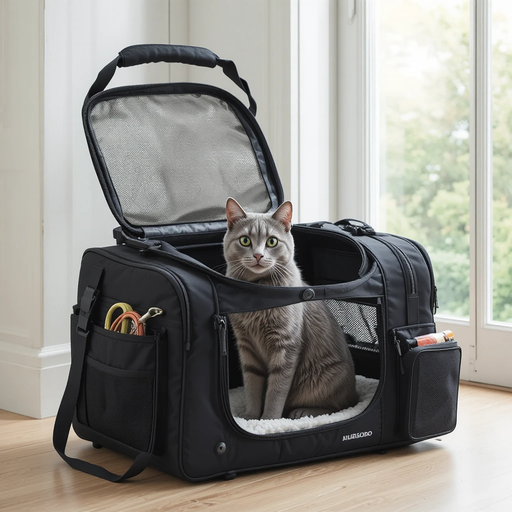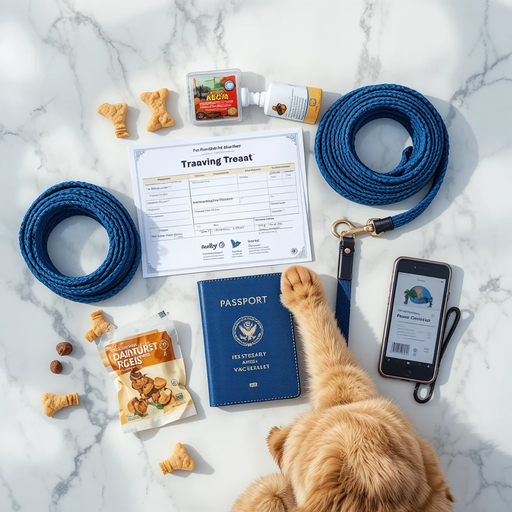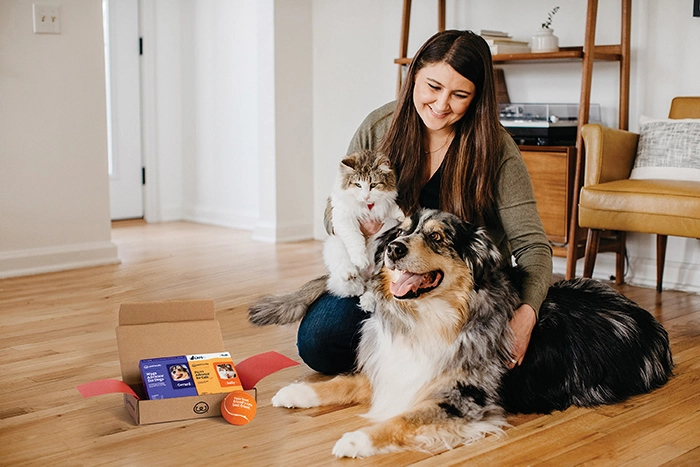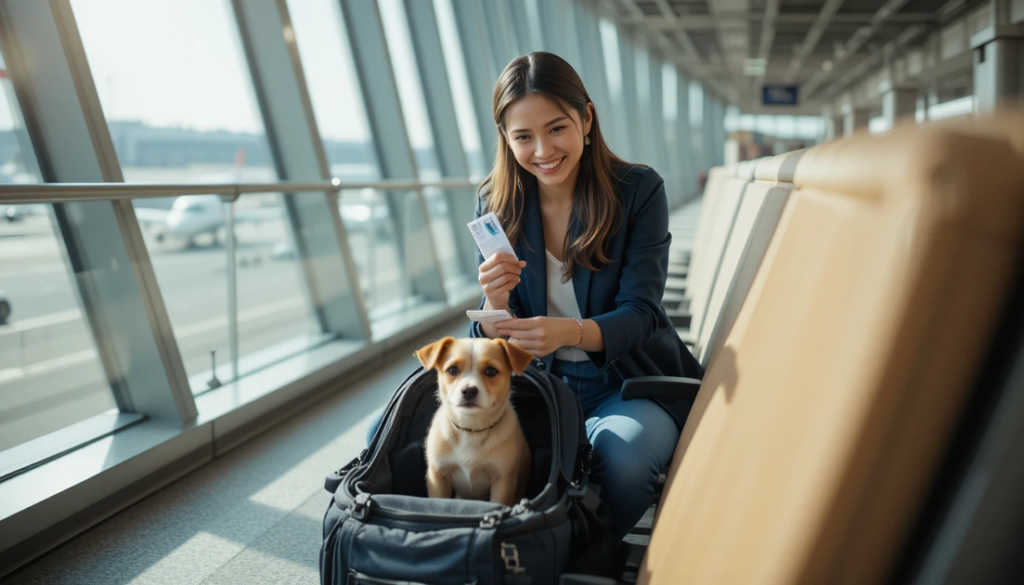Planning a vacation but can’t imagine leaving your furry companion behind? You’re not alone. Every year, millions of pet parents face the same dilemma: navigating the maze of pet cabin travel airline rules to keep their four-legged family members close. The difference between a smooth journey and a travel disaster often comes down to understanding one simple truth: airlines have rules —lots of them —and they change frequently.
Maybe you’ve heard horror stories about pets turned away at the gate. Or you’re overwhelmed by conflicting information online. One airline says your cat carrier is fine; another says it’s two inches too big. Your friend flew with their French Bulldog last month, but now the airline has a new restriction. Sound familiar?
This guide cuts through the confusion. We’ll walk you through every rule, requirement, and real-world tip you need to fly with your pet in the cabin—legally, safely, and with minimal stress.
What Are Pet Cabin Travel Airline Rules?
Pet cabin travel airline rules are the specific policies airlines enforce for animals flying inside the passenger cabin rather than in cargo. These regulations exist for three reasons: your pet’s safety, passenger comfort, and regulatory compliance.
While rules vary by carrier, they generally cover:
- Size and weight limits (pet + carrier combined)
- Carrier specifications (material, ventilation, dimensions)
- Breed restrictions (especially for snub-nosed dogs and cats)
- Documentation (health certificates, vaccination records)
- Booking procedures (reservations, fees)
- In-cabin behavior (where the carrier fits, when you can interact)
Most major U.S. airlines limit cabin pets to cats and small dogs only. Birds, rabbits, and other animals? Usually grounded unless they’re service animals or emotional support animals with specific documentation. And yes, the rules differ dramatically between domestic and international flights.

Why Size Matters: Carrier Dimensions and Weight Limits
Here’s the most critical detail most travelers miss: your pet’s size doesn’t matter as much as the carrier’s size—and most airlines use different measurements.
Standard Size Restrictions
Most U.S. airlines require carriers to fit under the seat in front of you. That space varies by aircraft, but typical maximum dimensions are:
- American Airlines: 19″ x 13″ x 9″
- Delta: varies by flight (check during booking)
- United: 18″ x 11″ x 11″ (hard-sided) or slightly larger for soft-sided
- Southwest: 18.5″ x 13.5″ x 9.5″
Weight limits usually combine pet + carrier:
- American: 20 lbs total
- Delta: no specific limit, but must fit under the seat
- United: no hard limit, but you must lift it yourself
- Southwest: no limit, but must fit comfortably
Pro tip: Always measure your filled carrier with your pet inside. A soft-sided carrier can bulge beyond advertised dimensions once zipped, causing problems at the gate.
Soft-Sided vs. Hard-Sided Carriers
Soft-sided carriers win for cabin travel 90% of the time. Why? They compress slightly to fit under oddly-shaped seats and weigh less, giving your pet more weight allowance. Look for carriers with:
- Multiple mesh ventilation panels
- Waterproof bottom
- Sherpa lining for comfort
- Seatbelt straps for car travel, too
Hard-sided carriers offer better protection but rarely fit under modern airplane seats. Save them for cargo travel or road trips.
Choosing the Right Carrier: What Actually Works
Not all carriers labeled “airline-approved” actually are. Airlines don’t certify products; they just enforce rules. A quality carrier solves multiple problems: keeping your pet secure, comfortable, and invisible to grumpy seatmates.
Features That Matter
When shopping for cabin travel carriers, prioritize:
- Expandable sides: Give your pet extra space at the gate (but must collapse for takeoff)
- Top and side entry: Easier to load a nervous pet
- Storage pockets: For treats, leash, and paperwork
- Privacy flaps: Reduce visual stimuli that stress anxious animals
The Sherpa Original Deluxe Carrier and Sleepypod Air In-Cabin Carrier consistently earn high marks from frequent flyers because they meet most airline dimension requirements while prioritizing pet comfort. Both feature machine-washable liners—crucial for accidents—and seatbelt attachments for the drive to the airport.
Why this solves your problem: A proper carrier keeps you compliant with pet cabin travel airline rules while giving your pet a familiar, den-like space that smells like home. That’s less barking, less stress, and fewer dirty looks from other passengers.
Required Documentation: Paperwork You Can’t Forget
Showing up with just a cute pet won’t cut it. Airlines require specific documents, and missing one means your pet stays grounded.
Essential Documents Checklist
✅ Health Certificate
- Issued within 10 days of travel (some airlines allow 30 days for return flights)
- Must be from a USDA-accredited veterinarian
- State that your pet is healthy enough to fly
✅ Vaccination Records
- Rabies certificate (required for dogs, sometimes cats)
- Current vaccination tags
✅ Proof of Reservations
- Your pet’s reservation confirmation number (separate from yours)
- Paid pet fee receipt
✅ Breed Documentation (if applicable)
- Some airlines require photos or breed verification for mixed breeds
International travel adds:
- USDA endorsement of the health certificate
- Import permits from the destination country
- Microchip registration matching documentation
- Quarantine arrangements (if required)
Pro tip: Create a digital and physical folder with all documents. Email yourself copies and keep originals in a waterproof pouch attached to the carrier. Gate agents appreciate organization.
Breed Restrictions: Is Your Dog or Cat Allowed?
This is where pet cabin travel airline rules get strict—and emotional. Due to respiratory risks, most airlines ban or restrict:
Commonly Restricted Breeds
Dogs:
- Bulldogs (English, French, American)
- Pugs (all types)
- Boston Terriers
- Boxers
- Shih Tzus
- Pekingese
Cats:
- Persian
- Himalayan
- Exotic Shorthair
These brachycephalic (snub-nosed) breeds face higher risks of breathing difficulties at altitude and in stressful environments. Even if your mix “looks mostly” like an allowed breed, airlines may deny boarding if they spot flat facial features.
Exceptions? Rare. Some carriers allow these breeds in cargo with special crates, but cabin restrictions are nearly universal. A few international carriers have more lenient policies, but you’d be gambling with your pet’s safety.
Why this matters for product choice: If you own a restricted breed, investing in a carrier is pointless for air travel. Instead, consider GPS-enabled collars and pet camera systems for road trips or professional pet transport services.

Airline Comparison: Major Carrier Policies at a Glance
Rules change, so always verify directly with the airline before booking. Here’s the current landscape for domestic U.S. flights:
American Airlines
- Fee: $150 each way
- Limit: 1 pet per passenger (kennel), 7 pets total per flight
- Booking: Required, book early
- Unique rule: No pets in First Class on certain aircraft
Delta Air Lines
- Fee: $95-$200 depending on destination
- Limit: 2-4 pets per flight (varies by route)
- Booking: Required, high-demand routes sell out months ahead
- Unique rule: Most flexible with international in-cabin pets
United Airlines
- Fee: $125 each way
- Limit: 6 pets per flight (4 in Economy, 2 in First)
- Booking: Required
- Unique rule: No pets in Premium Plus seating
Southwest Airlines
- Fee: $125 each way
- Limit: 6 pets per flight (Southwest has generous weight policies)
- Booking: First-come, first-served
- Unique rule: Only allows pets on domestic flights—no international
JetBlue
- Fee: $125 each way
- Limit: 4 pets per flight
- Booking: Required
- Unique rule: Offers JetPaws program with bonus TrueBlue points
Comparison insight: Delta allows the most international in-cabin travel but charges premium fees. Southwest is cheapest for domestic-only travel but has stricter route limitations. JetBlue’s rewards program makes it attractive for frequent flyers.
Tips for Stress-Free Cabin Travel with Your Pet
Even with perfect paperwork, travel day can unravel. These veteran-tested strategies keep everyone calm:
Before Travel (3-7 Days)
- Acclimate your pet to the carrier: Leave it open in your living room with treats inside. Feed meals in it.
- Practice airport sounds: Play YouTube videos of airport announcements at low volume, gradually increasing.
- Visit the vet: Get a health certificate and discuss calming aids (never sedatives—they’re dangerous during flight).
Day of Travel
- Exercise first: A tired pet is a quiet pet. Visit a dog park or have a vigorous play session.
- Limit food: Feed a light meal 4-6 hours before flight to prevent nausea and accidents.
- Arrive early but not too early: Get there 2 hours before domestic, 3 hours for international. Too much idle time increases anxiety.
- Use the pet relief area: Most major airports now have them post-security. Locate it immediately after check-in.
At the Gate and Onboard
- Board last: Less time in the cramped plane. Most airlines let pre-boarders with pets go last.
- Carrier placement: Slide the carrier under the seat with mesh vents facing you for airflow.
- Stay calm: Pets mirror your energy. Deep breaths, quiet voice, occasional treat through the mesh.
Product solution: A pet calming pheromone spray (like Adaptil for dogs or Feliway for cats) applied to the carrier 15 minutes before loading can dramatically reduce anxiety without medication.
How Much Does Pet Cabin Travel Cost?
Budgeting for pet travel goes beyond the airline fee. Here’s a realistic breakdown for a round-trip domestic flight:
| Expense | Estimated Cost |
|---|---|
| Airline pet fee (x2) | $250-$400 |
| Carrier (if needed) | $40-$200 |
| Vet health certificate | $75-$150 |
| Travel bowls/accessories | $20-$50 |
| Airport pet relief fee (some airports) | $0-$10 |
| Total | $385-$810 |
International travel easily doubles these costs with USDA endorsements ($38 per document), import permits ($50-$300), and potential quarantine fees ($200-$2,000).
Cost-saving tip: A durable, airline-compliant carrier is a one-time investment that pays for itself after two trips. Cheap carriers that rip or don’t fit cost more in the long run through replacements and stress.
International Pet Cabin Travel: Extra Rules to Know
Crossing borders with pets involves another layer of bureaucracy. Each country sets its own import rules, which airlines must enforce.
Key Differences
- Microchipping: Required for EU entry (ISO 11784/11785 standard)
- Rabies titers: Some countries require blood tests months in advance
- Waiting periods: The EU requires 21 days after rabies vaccination before entry
- Banned breeds: Some nations (like the UK) prohibit certain breeds entirely
Critical: Some routes that allow domestic in-cabin pets prohibit them on international legs. Always check both the airline’s international policy and the destination country’s import rules before booking.
The USDA’s pet travel website and PetTravel.com maintain updated databases of international requirements. Bookmark both.
Frequently Asked Questions
Can I take my pet out of the carrier during the flight?
No. FAA regulations require pets to remain in carriers under the seat for the entire flight. Only service animals may be unrestrained.
What if my pet cries or barks?
Light whining is normal. A gentle voice through the mesh helps. For persistent distress, avoid opening the carrier. Flight attendants may relocate you if noise disrupts other passengers. Practice makes perfect—acclimate your pet beforehand.
Can I buy a seat for my pet?
Not on commercial airlines. Pets must fit in carriers under seats. Some private charters offer pet seats, but that’s a different price point entirely.
Do emotional support animals count as pets?
Following the 2021 DOT rule changes, ESAs are treated as regular pets and must follow all pet cabin travel airline rules and fees. Only trained service dogs fly free.
What if my connecting flight is on a different airline?
You must meet each carrier’s rules separately. This includes fees and documentation. Allow extra time between flights for this hassle.

Conclusion: Your Pet-Friendly Skies Await
Navigating pet cabin travel airline rules feels overwhelming because it is—until you break it down into checklists, measurements, and timelines. The payoff? Arriving at your destination with your best friend by your side, not waiting anxiously in a cargo hold.
Remember: the right preparation separates stressful trips from seamless ones. Measure twice, call the airline to confirm policies, and invest in a carrier that makes your pet feel secure. These aren’t just rules—they’re the roadmap to keeping your family together, even at 30,000 feet.
Ready to turn travel dreams into boarding passes? Explore our curated collection of TSA-tested carriers, calming travel accessories, and document organizers designed by pet parents who’ve been there. Every product in our store meets the strictest airline requirements and has been road-tested by real pets on real flights.


